Europa is a series of board wargames planned to cover combat over the entire European Theater of World War II at a scale that represents units from divisions down to battalions and game turns that represent two weeks of time. The series was launched in 1973, and is still in production as of 2013, with over a dozen titles published and several more still in production or planning. Most of the titles qualify as "monster games", a subgenre of wargames featuring extensive orders of battle, a complex ruleset and usually a large game-map area with a detailed representation of the terrain they cover.

Fire in the East is a monster board wargame published in 1984 by Game Designers' Workshop (GDW) that simulates Operation Barbarossa, the German invasion of the Soviet Union in 1941.
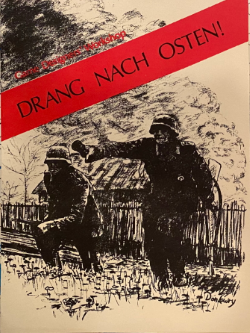
Drang Nach Osten! is a monster board wargame published in 1973 by Game Designers' Workshop (GDW) that simulates Operation Barbarossa, the German invasion of the Soviet Union in 1941. The game was the first of what was envisioned as a series of games with identical wargame rules and map scale that would simulate the entire Second World War in Europe.

The Arab-Israeli Wars, subtitled "Tank Battles in the Mideast 1956–73", is a board wargame published by Avalon Hill in 1977 that simulates various battles during the Suez Crisis, Six-Day War and Yom Kippur War.

Battle for Germany is a board wargame published by Simulations Publications Inc. (SPI) in 1975 that simulates World War II operations in Germany during 1945
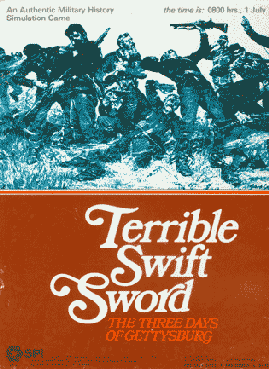
Terrible Swift Sword: Battle of Gettysburg Game is a grand tactical regimental level board wargame published by Simulations Publications, Inc. (SPI) in 1976 that simulates the Battle of Gettysburg during the American Civil War. A second edition was published by TSR in 1986.
War In The East: The Russo-German Conflict, 1941-45 is a board game published in 1974 by Simulations Publications.

Panzergruppe Guderian is a board wargame published by Simulations Publications, Inc. in 1976 that simulates the 1941 Battle of Smolensk during World War II.
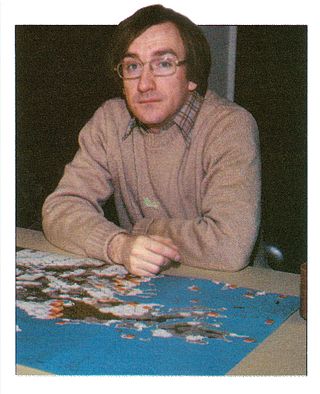
Paul Richard "Rich" Banner is an American game designer and graphic artist.

A monster game is a game that is either very large, very complex, or both. One criterion sometimes adopted is the number of pieces; a game which puts greater than 1000 counters into play at once may be considered to be a monster game. This classification can technically be applied to any board game, but most commonly refers to the kind of non-abstract wargames in which a large amount of time is needed to play each turn as a result of a relatively high commitment to period accurate military realism. Drang Nach Osten and its companion, Unentschieden led to the Europa Series games, a giant WWII game.
La Bataille de la Moscowa is a board wargame published originally by Martial Enterprises in 1975, later republished by Game Designers Workshop in 1977, and by Clash of Arms in 2011.
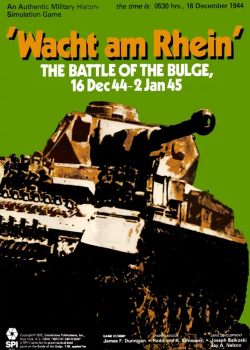
Wacht am Rhein is a grand tactical monster board wargame published by Simulations Publications, Inc. (SPI) in 1977 that simulates Germany's Battle of the Bulge offensive in late 1944 during World War II.

Narvik: The Campaign in Norway, 1940 is a board wargame published by Game Designers' Workshop (GDW) in 1974 that simulates Operation Weserübung, the German invasion of Denmark and Norway during World War II. The game was one of the first in the Europa series of twenty interlocking games envisioned by GDW that would cover the entire European and North African theatres from the start to the end of World War II, using identical map scales and similar rules.

La Grande Armée, subtitled "The Campaigns of Napoleon in Central Europe", is a board wargame published by Simulations Publications Inc. (SPI) in 1972 that simulates three campaigns of Napoleon.

The Battle of Raphia, 217 B.C. is a board wargame published by Game Designers' Workshop (GDW) in 1977 that simulates the Battle of Raphia during the Syrian Wars. The game was the first in GDW's "Series 120", which featured shorter and less complex games containing only 120 counters that supposedly could be played in 120 minutes.

Bar-Lev, subtitled "The Yom-Kippur War of 1973", is a board wargame published by Conflict Games in 1974, only months after the end of the Yom Kippur War. The game simulates battles on the two major fronts of the war: the Golan Heights and the Suez Canal. The game proved very popular, and a second edition was published by Game Designers' Workshop (GDW) in 1977.

Guilford Courthouse is a board wargame published by Game Designers' Workshop (GDW) in 1978 that simulates the Battle of Guilford Court House during the American Revolution. Reviews of the game were mixed: critics liked the rules system but found the game predictable, with only a few strategic options open to either player.
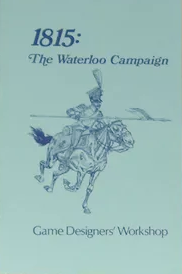
1815: The Waterloo Campaign is a board wargame published by Game Designers' Workshop (GDW) in 1975 that simulates the final three days of Napoleon's last campaign, culminating in the Battle of Waterloo. Reviewers characterized the game as not too complex, playable, fast-moving, and enjoyable. The game was found to be tilted in favor of the French, and GDW released a second edition in 1982 that addressed that issue.
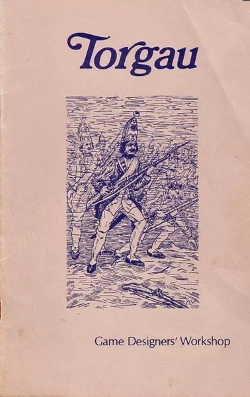
Torgau is a board wargame published by Game Designers' Workshop (GDW) in 1974 that simulates the Battle of Torgau between Prussias and Austrians in 1760 during the Seven Years' War, a costly battle for both sides. Reviews were generally favorable, although gameplay was characterized as very long, complex, and more similar to traditional miniatures wargaming than board wargames.
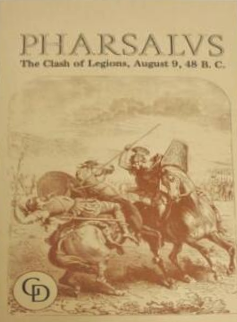
Pharsalus: The Clash of Legions, August 9, 48 B.C. is a board wargame published by Game Designers' Workshop (GDW) in 1977 that simulates the Battle of Pharsalus, which decided who would rule the Roman Empire, Pompey or Julius Caesar.

















